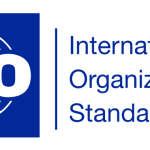
Exploring CGSB and NDT Methods: A Comprehensive Guide
Introduction:
In the realm of non-destructive testing (NDT), the Canadian General Standards Board (CGSB) plays a pivotal role in setting the standards for quality and safety. This blog post delves into the significance of CGSB and explores various NDT methods that adhere to these rigorous standards.
Understanding CGSB:
The Canadian General Standards Board is a critical regulatory body that establishes standards for various industries, including non-destructive testing. These standards ensure the reliability and consistency of NDT methods, contributing to the safety and integrity of structures and components across sectors.
NDT Methods Aligned with CGSB Standards:
1. **Ultrasonic Testing (UT):**
– UT involves using high-frequency sound waves to detect internal flaws or assess material thickness.
– CGSB standards for UT focus on equipment calibration, technician qualifications, and proper inspection procedures.
2. **Radiographic Testing (RT):**
– RT utilizes X-rays or gamma rays to capture images of the internal structure of a material.
– CGSB guidelines emphasize radiation safety, film processing, and image quality assessment.
3. **Magnetic Particle Testing (MT):**
– MT identifies surface and near-surface flaws in ferromagnetic materials using magnetic fields.
– CGSB standards cover magnetization techniques, particle application, and interpretation of results.
4. **Liquid Penetrant Testing (PT):**
– PT involves applying a liquid dye to the surface of a material to reveal surface-breaking defects.
– CGSB standards for PT address application procedures, dwell times, and proper cleaning methods.
Benefits of CGSB Aligned NDT Methods:
1. **Enhanced Safety:**
– Adherence to CGSB standards ensures that NDT processes prioritize safety, protecting technicians and the public.
2. **Consistency Across Industries:**
– CGSB standards provide a common framework, promoting consistency and reliability in NDT practices across various sectors.
3. **Quality Assurance:**
– Companies following CGSB-aligned NDT methods benefit from enhanced quality assurance, minimizing the risk of defects and failures.
Conclusion:
In the dynamic field of non-destructive testing, aligning with CGSB standards is paramount for ensuring the highest quality and safety standards. By exploring various NDT methods that adhere to these regulations, industries can make informed decisions to safeguard their assets and maintain the integrity of critical components. CGSB is a cornerstone in pursuing excellence within the NDT landscape, paving the way for innovation and reliability in inspecting and testing materials.






